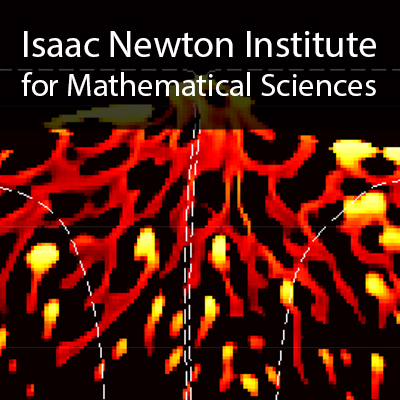Seismic imaging of mantle melting processes beneath volcanic arcs and backarc spreading centers
Duration: 1 hour 7 mins
Share this media item:
Embed this media item:
Embed this media item:
About this item

| Description: |
Wiens, D (Washington University in St. Louis)
Monday 6th June 2016 - 11:30 to 12:30 |
|---|
| Created: | 2016-06-14 10:47 |
|---|---|
| Collection: | Melt in the Mantle |
| Publisher: | Isaac Newton Institute |
| Copyright: | Wiens, D |
| Language: | eng (English) |
| Distribution: |
World
|
| Explicit content: | No |
| Aspect Ratio: | 16:9 |
| Screencast: | No |
| Bumper: | UCS Default |
| Trailer: | UCS Default |
| Abstract: | Co-author: S. Shawn Wei (Washington University in St Louis; now at Scripps Institition of Oceanography)
Seismological studies using land and ocean bottom seismographs can help constrain models of mantle melting by imaging velocity anomalies resulting from the presence of partial melt. Arc-backarc systems are particularly interesting, as they involve both flux and decompression melting mechanisms, variable water input into the melting process, and various levels of interaction between arc and backarc. In addition, an extensive dataset of petrological and geochemical measurements also provide important constraints. Seismic tomographic results imaging arc-backarc systems show extensive upper mantle regions with velocities that are too slow to be explained without invoking partial melt. In the Mariana arc, mantle seismic anomalies beneath the arc and backarc spreading center are separated by a high velocity, low attenuation region at shallow depths (< 80 km), implying distinct arc and backarc melting regions, with the anomalies coalescing at greater depths. Large slow velocity anomalies delineate the regions with significant melt, extending from 10-50 km depth beneath the backarc and 40-80 km depth beneath the volcanic arc, consistent with final melt equilibrium depths estimated from basalt thermobarometry. In the Lau basin, backarc spreading center basalts show a rapid transition from MORB-like chemistry in the north to back-arc basin basalts with strong water and slab-derived geochemical components in the south as the distance between the spreading center and the volcanic arc is reduced. Slow seismic velocity anomalies beneath the spreading center extend deeper and farther west in the north, suggesting that partial melting occurs along an upwelling limb of mantle flow originating in the ambient mantle west of the backarc, but this feature is missing in the south, indicating that the southern ridge samples only mantle in the vicinity of the subducting slab, consistent with its high water content. The amplitude of the observed Lau backarc seismic anomalies have an inverse relationship to inferred mantle water content, suggesting that water reduces the melt porosity. Water may increase the efficiency of melt transport and reduce porosity by lowering the melt viscosity, increasing grain size through faster grain growth, or by causing a different topology of melt within the mantle rock. A lower melt porosity for aqueous melts is also consistent with the smaller amplitude seismic anomaly seen for the water-rich volcanic arc melting regions compared to the backarc melt production zone. Seismic attenuation studies show very high shear attenuation beneath the backarc spreading center consistent with high temperatures and partial melt. Perhaps most surprisingly, we also observe strong bulk attenuation, suggesting that partially molten mantle absorbs seismic energy with some poorly understood dissipative process. |
|---|---|
Available Formats
| Format | Quality | Bitrate | Size | |||
|---|---|---|---|---|---|---|
| MPEG-4 Video | 640x360 | 1.94 Mbits/sec | 978.42 MB | View | Download | |
| WebM | 640x360 | 800.5 kbits/sec | 392.82 MB | View | Download | |
| iPod Video | 480x270 | 523.46 kbits/sec | 256.88 MB | View | Download | |
| MP3 | 44100 Hz | 250.64 kbits/sec | 123.00 MB | Listen | Download | |
| Auto * | (Allows browser to choose a format it supports) | |||||

